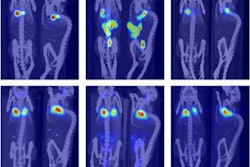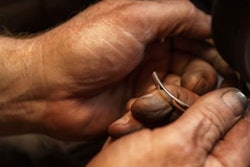
Medical imaging is a resource-intensive field, but radiology practices can proactively create a more sustainable environment by reducing the amount of energy and waste produced every day, researchers suggested in an article published September 13 in Academic Radiology.
A team led by Dr. Christina Sumner from Emory University wrote that while reducing radiology's resource footprint is doable, it's up to leadership to take the helm on such initiatives and raise awareness.
"Radiologists and healthcare organizations have many opportunities to make smaller and larger contributions toward a greener environment," Sumner et al wrote. "The most impactful actions that can be taken fall under the auspice of operational leadership within radiology practices."
The U.S. healthcare sector consumes significant amounts of water and energy, producing waste of various kinds, the researchers wrote. They cited a 2007 report saying that the sector produced 8% of total greenhouse gas emissions in the U.S.
The report identified hospital care, physician and clinical services, and prescription drugs as contributing factors. Heating, ventilation, and cooling (HVAC) systems, food services, laundry, computing, and capital equipment have also been previously identified as contributors to emissions from hospitals.
But what about radiology specifically? Sumner and colleagues wanted to focus on the specialty and identify ways practices can reduce emissions, as well as raise awareness among colleagues and employees.
Reducing energy use
While energy-efficient lighting systems are widely commercially available, HVAC systems can be modified to use less energy outside of working hours, and monitors can be shut off when not in use, the team wrote that the path to greener radiology may be in the machines themselves.
The researchers cited a study reporting that over the course of a year, four MRI scanners and three CT scanners use enough electricity to power a town in Switzerland of 852 people.
They wrote that radiologists can collaborate with vendors on sustainability strategies. For example, Arizona State University installed a 9.4-tesla MRI scanner in early 2022 that is cryogen-free. This eliminates the use of the cryogenic liquid helium as a nonrenewable resource and needing less hospital space.
Also, academic-industry partnerships can be explored for such strategies. The University of California, San Francisco in 2021 partnered with Siemens Healthineers to monitor imaging device energy consumption. This aims to make way for carbon-neutral imaging services, as well as find out how low-field strength MRI imaging can be used.
The team also noted talks among radiology leaders about the possibility of including a sustainability rating in the American College of Radiology Appropriateness Criteria. The group wrote that this could help promote imaging procedures with a lower environmental footprint when multiple modalities might be equally appropriate.
Reducing waste
Reusing and recycling are two of the three Rs for waste management. For radiologists, several actions can be taken. Going paperless and utilizing reusable medical gowns can help reduce waste. Sumner and colleagues also added that patients can order their food a la carte to help reduce food waste, and biodegradable items and packaging can help the cause.
However, the researchers also called attention to virtual technologies to help reduce pollution. The COVID-19 pandemic caused radiology practices to use telehealth to continue work while adhering to social distancing guidelines. Teleradiology has seen success in the past couple years in being used while still delivering effective diagnostics.
Sumner et al wrote that using teleradiology more can help decrease pollution and energy use related to transportation. They also called for more virtual meetings and events rather than in-person events for this reason.
"Additionally, a checklist for hosting eco-friendly meetings also suggests raising awareness for sustainable and carbon-neutral events among attendees, reduce meat and dairy products to reduce carbon emissions, and use smaller plates to minimize food waste, avoid disposable materials and ask attendees to bring their own cups, plates, and cutlery, and provide waste sorting bins," they wrote.
Raising awareness
Perhaps radiology leaders are excited to bring about these eco-friendly changes to their practices, but staff may have reservations. So, how should leaders inspire motivation? Sumner and colleagues wrote that as a first step, leaders should help personnel understand how climate change affects their personal health, especially when it comes to clean air, safe water, and adequate housing.
A 2021 report from the World Health Organization (WHO) suggests that the direct costs of climate change to health will be $2 billion to $4 billion a year by 2030. Along with that, the report says the WHO anticipates around 250,000 additional deaths per year stemming from malnutrition, malaria, diarrhea, and heat stress.
Green campaigns similar to Image Wisely or Image Gently could also help motivate radiologists to pledge their commitment to sustainability, and effective engagement by leaders to employees can help encourage employees to take steps toward fostering a greener culture, the researchers wrote.
"Individuals can make simple contributions in day-to-day life toward a greener world," Sumner and colleagues added. "After all, it is eventually up to the individual user to remember to power down any computer or workstations that are not being used and to switch off lights in rooms that are unoccupied."



















